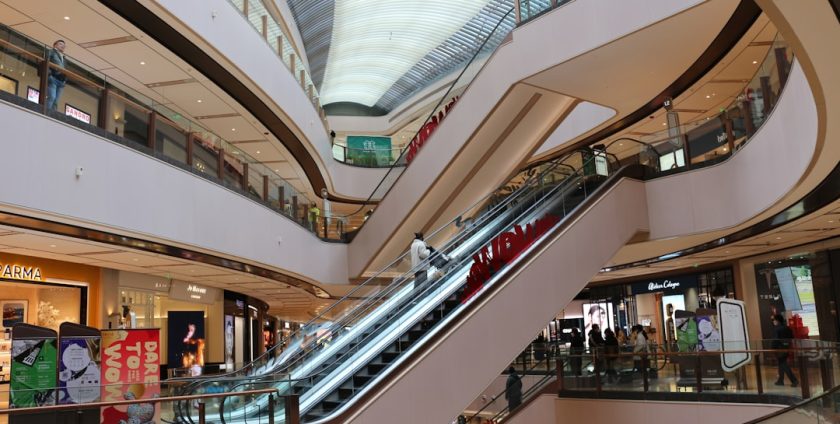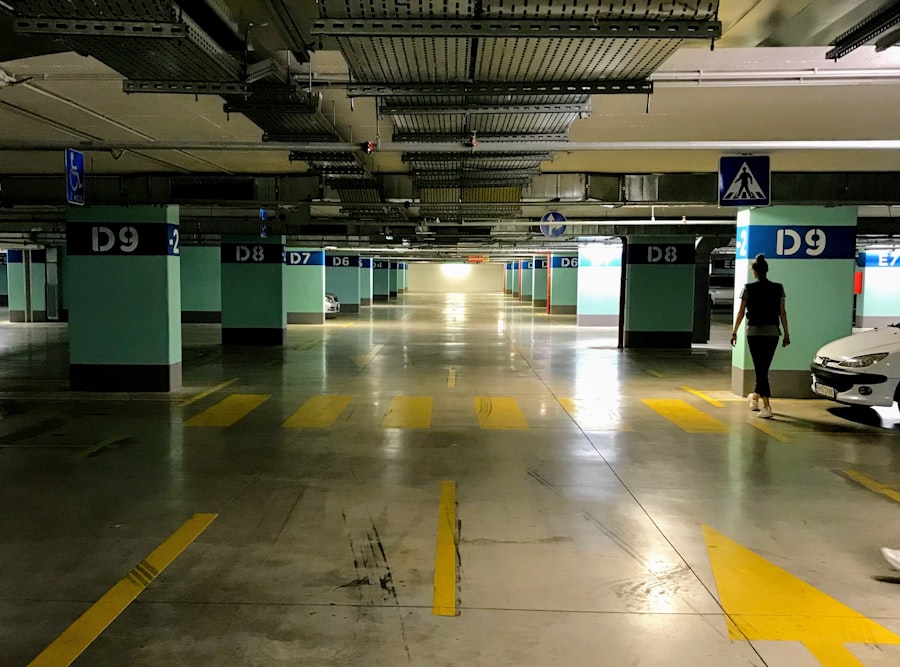
- By: admin
- Category: Commercial Floor Cleaning Machines
- 0 comment
In the bustling environment of shopping centres, the first impression is often the most lasting. Clean floors play a pivotal role in shaping that impression, influencing not only the aesthetic appeal of the space but also the overall customer experience. A well-maintained floor can enhance the ambience, encourage foot traffic, and ultimately drive sales.
Conversely, dirty or poorly maintained floors can deter customers, leading to a negative perception of the entire establishment. For contract cleaners, building managers, and facility managers, understanding the significance of clean floors is essential for maintaining a welcoming atmosphere that fosters customer loyalty. Moreover, clean floors contribute to health and safety standards within shopping centres.
High foot traffic areas are breeding grounds for dirt, grime, and bacteria, which can pose health risks to both customers and staff. Regular cleaning not only mitigates these risks but also ensures compliance with health regulations. In an era where hygiene is paramount, especially post-pandemic, the importance of maintaining pristine floors cannot be overstated.
This article will delve into effective strategies for ensuring that shopping centre floors remain clean and inviting, thereby enhancing the overall shopping experience. Please feel free to get in touch with us through our Contact Us page.
Summary
- Clean floors in shopping centres are crucial for creating a positive and hygienic environment for customers.
- Implementing a regular cleaning schedule is essential to ensure that floors are consistently maintained and free from dirt and debris.
- Utilising high-quality cleaning equipment and products is key to achieving effective and thorough floor cleaning.
- Training and supervising cleaning staff is important to ensure that they are equipped with the necessary skills and knowledge to maintain clean floors.
- Employing advanced cleaning techniques for high-traffic areas is crucial to effectively manage heavy footfall and keep floors clean and presentable.
Implementing a Regular Cleaning Schedule
Establishing a regular cleaning schedule is fundamental to maintaining clean floors in shopping centres. A well-structured timetable ensures that all areas receive adequate attention, preventing the accumulation of dirt and grime that can occur in high-traffic zones. For instance, a shopping centre may implement a daily cleaning routine during peak hours, focusing on entrances, food courts, and escalators where footfall is highest.
This proactive approach not only keeps the floors looking pristine but also demonstrates a commitment to cleanliness that resonates with customers. In addition to daily cleaning tasks, it is essential to incorporate periodic deep cleaning sessions into the schedule. These sessions can involve stripping and sealing floors, buffing surfaces, and addressing any stubborn stains or marks that regular cleaning may not eliminate.
For example, a shopping centre might choose to conduct deep cleaning during off-peak hours or overnight to minimise disruption to shoppers. By adhering to a comprehensive cleaning schedule, facility managers can ensure that every corner of the shopping centre is maintained to the highest standards.
Utilising High-Quality Cleaning Equipment and Products

The effectiveness of any cleaning regimen is heavily reliant on the quality of equipment and products used. Investing in high-quality cleaning machines—such as automatic scrubbers and floor polishers—can significantly enhance the efficiency of floor maintenance. These machines are designed to tackle tough stains and heavy dirt build-up while ensuring minimal disruption to shoppers.
For instance, using a ride-on scrubber in large open areas can expedite the cleaning process while providing a thorough clean that manual methods may not achieve. Equally important is the selection of appropriate cleaning products. Facility managers should opt for eco-friendly solutions that are effective yet safe for both customers and staff.
Many modern cleaning products are formulated to break down dirt and grime without leaving harmful residues behind. For example, using pH-neutral cleaners can help maintain the integrity of various flooring materials while ensuring a hygienic environment. By prioritising high-quality equipment and products, shopping centres can achieve superior cleanliness and longevity of their flooring investments.
Training and Supervising Cleaning Staff
The success of any cleaning operation hinges on the competence and dedication of the cleaning staff. Therefore, investing in comprehensive training programmes is crucial for ensuring that employees are well-equipped to handle the specific challenges associated with maintaining shopping centre floors. Training should cover not only the proper use of equipment and cleaning products but also best practices for safety and efficiency.
For instance, staff should be trained in techniques for managing spills promptly to prevent slips and falls, which are common hazards in high-traffic areas. Supervision also plays a vital role in maintaining high standards of cleanliness. Regular check-ins and performance evaluations can help identify areas for improvement and ensure that staff adhere to established protocols.
For example, a facility manager might implement a system of random inspections to assess cleanliness levels throughout the shopping centre. This not only reinforces accountability among staff but also fosters a culture of excellence in cleaning practices.
Employing Advanced Cleaning Techniques for High-Traffic Areas
High-traffic areas within shopping centres require specialised cleaning techniques to maintain their appearance and safety. Techniques such as interim carpet cleaning or frequent buffing of hard floors can help manage wear and tear while keeping surfaces looking fresh. For instance, employing a low-moisture carpet cleaning method can effectively remove dirt from carpets without requiring extensive drying time, making it ideal for busy retail environments.
Additionally, utilising floor mats at entrances can significantly reduce the amount of dirt tracked into the shopping centre. These mats act as a first line of defence against grime, capturing debris before it reaches the main flooring surfaces. Regularly cleaning or replacing these mats is essential to ensure they remain effective.
By implementing advanced cleaning techniques tailored to high-traffic areas, facility managers can prolong the life of their flooring while enhancing overall cleanliness.
Utilising Technology for Efficient Floor Maintenance

In today’s digital age, technology plays an increasingly important role in streamlining cleaning operations within shopping centres. Smart cleaning solutions—such as automated floor scrubbers equipped with sensors—can optimise cleaning routes based on foot traffic patterns, ensuring that high-use areas receive priority attention. This not only improves efficiency but also reduces labour costs by allowing staff to focus on other essential tasks.
Moreover, employing software solutions for scheduling and tracking cleaning activities can enhance accountability and transparency within the cleaning team. For example, facility managers can use mobile applications to monitor real-time progress on cleaning tasks and address any issues promptly. This level of oversight ensures that standards are consistently met while providing valuable data for future planning.
By embracing technology in floor maintenance practices, shopping centres can achieve higher levels of cleanliness with greater efficiency.
Engaging with Customers to Promote Cleanliness
Engaging with customers about cleanliness can foster a sense of community and shared responsibility within shopping centres. Simple initiatives—such as signage promoting hygiene practices or encouraging customers to report spills—can create an environment where cleanliness is valued by all stakeholders. For instance, placing visible reminders about keeping floors clean near food courts or play areas can prompt patrons to be more mindful of their surroundings.
Additionally, hosting events or campaigns focused on cleanliness can further enhance customer engagement. For example, a shopping centre might organise a “Cleanliness Day” where customers are invited to participate in activities aimed at promoting hygiene and cleanliness within the space. Such initiatives not only raise awareness but also strengthen customer loyalty by demonstrating that management prioritises their health and safety.
Monitoring and Evaluating the Effectiveness of Floor Maintenance Practices
To ensure that floor maintenance practices remain effective over time, it is essential to establish a system for monitoring and evaluating their impact. Regular assessments can help identify trends in cleanliness levels and highlight areas requiring improvement. For instance, conducting customer satisfaction surveys focused on cleanliness can provide valuable insights into how patrons perceive the state of the shopping centre’s floors.
Furthermore, analysing data from cleaning logs can reveal patterns related to foot traffic and peak usage times, allowing facility managers to adjust their cleaning schedules accordingly. By continuously monitoring and evaluating floor maintenance practices, shopping centres can adapt their strategies to meet evolving customer expectations while maintaining high standards of cleanliness. In conclusion, maintaining clean floors in shopping centres is not merely an aesthetic concern; it is integral to creating a positive customer experience and ensuring health and safety standards are met.
By implementing regular cleaning schedules, utilising high-quality equipment, training staff effectively, employing advanced techniques, leveraging technology, engaging customers, and continuously monitoring practices, facility managers can uphold cleanliness standards that reflect positively on their establishments. **FAQs** 1. **How often should shopping centre floors be cleaned?**
The frequency of cleaning depends on foot traffic levels; however, high-traffic areas should be cleaned daily while deep cleaning may be scheduled weekly or monthly.
2. **What types of equipment are best for maintaining shopping centre floors?**
High-quality automatic scrubbers, floor polishers, and eco-friendly cleaning solutions are recommended for effective floor maintenance. 3.
**How can I ensure my cleaning staff are adequately trained?**
Implement comprehensive training programmes covering equipment use, safety protocols, and best practices for maintaining cleanliness. 4. **What role does technology play in floor maintenance?**
Technology can optimise cleaning routes through smart machines and track progress via software solutions for enhanced efficiency.
5. **How can I engage customers in promoting cleanliness?**
Use signage to encourage responsible behaviour regarding cleanliness and consider hosting events focused on hygiene awareness within the shopping centre.
FAQs
What are the challenges of maintaining spotless floors in shopping centres during peak hours?
During peak hours, shopping centres experience high foot traffic, which can lead to an increase in dirt, debris, and spills on the floors. This makes it challenging to keep the floors spotless.
What are some effective cleaning methods for maintaining spotless floors during peak hours?
Effective cleaning methods for maintaining spotless floors during peak hours include using high-performance floor cleaning machines, implementing regular cleaning schedules, and using appropriate cleaning products for different types of flooring.
How can shopping centres manage high foot traffic while maintaining spotless floors?
Shopping centres can manage high foot traffic by strategically scheduling cleaning activities during off-peak hours, using signage to direct traffic away from freshly cleaned areas, and employing a team of dedicated cleaning staff to address spills and messes promptly.
What role does technology play in maintaining spotless floors during peak hours?
Technology plays a crucial role in maintaining spotless floors during peak hours by providing advanced floor cleaning machines that can efficiently and effectively clean large areas in a short amount of time. Additionally, technology can also be used for real-time monitoring of cleaning activities and scheduling automated cleaning processes.
